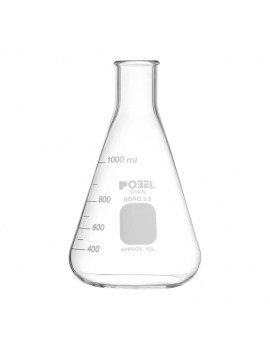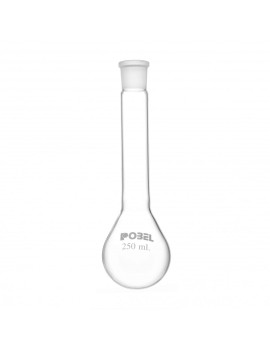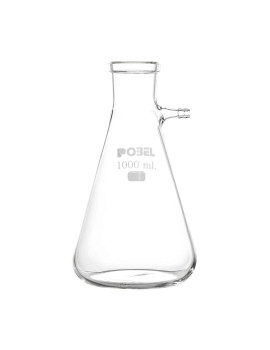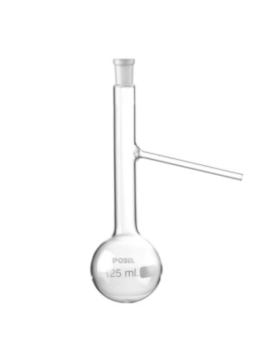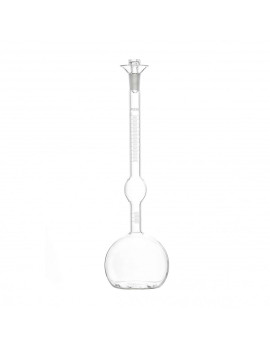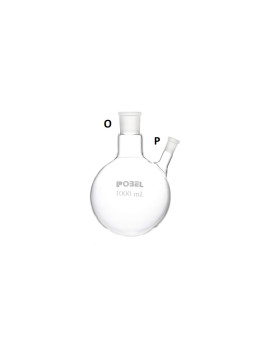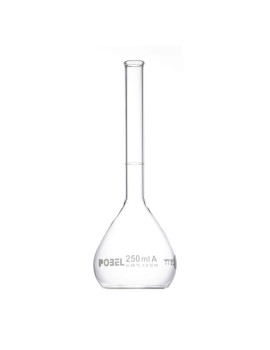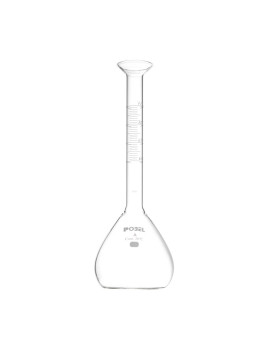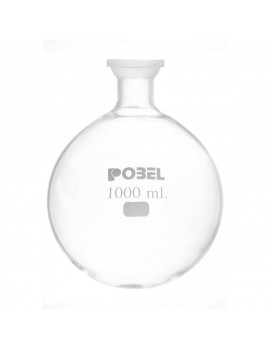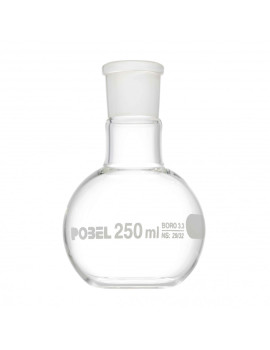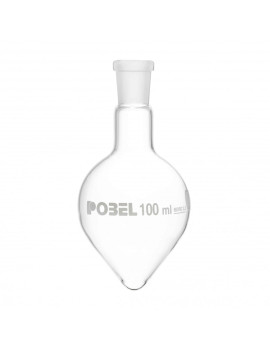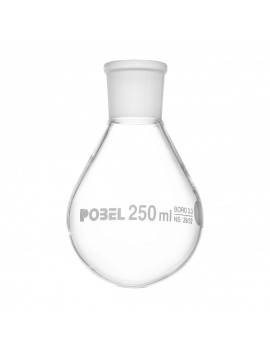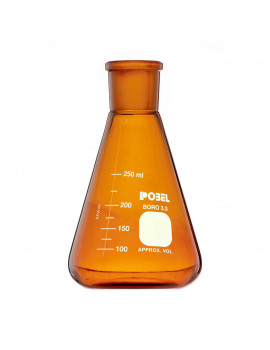FLASKS
Laboratory flasks
Laboratory flasks are essential containers for scientific experiments, designed to hold, measure, heat and mix liquids or chemical solutions. They are made of resistant materials, such as borosilicate glass or plastic, to withstand extreme temperatures and resist the action of corrosive substances. In this article, we will explore the different types of flasks, their most common uses and the features you should consider when choosing the right one for your needs.
What is a laboratory flask?
A laboratory flask is a container used in scientific experiments, characterized by its narrow neck and wider base, which facilitates the handling of liquids and gases. This design allows better heat distribution, minimizing the risk of accidental spills. Flasks are essential in various areas of science, from chemistry to biology, and are used both in the preparation of solutions and in the performance of experiments requiring precision.
Historically, the use of flask-like vessels dates back to ancient civilizations such as the Egyptians, who used them in the distillation of oils and perfumes. Over time, their design and materials have been refined to meet modern laboratory requirements.
Types of laboratory flasks
There are several types of laboratory flasks, each designed for a specific purpose. The most common ones are listed below:
Erlenmeyer flask
Erlenmeyer flasks are one of the best known flasks in laboratories. It has a conical shape with a wide base and a narrow neck, which facilitates the mixing of liquids without risk of spillage. It is commonly used for preparing solutions, performing titrations and heating substances.
Volumetric flask
The volumetric flask is mainly used to measure exact volumes of liquids. It has a long, narrow neck, with a precise calibration mark indicating a specific volume. This type of flask is essential in the preparation of solutions of exact concentration, such as in analytical chemistry experiments.
Distillation flask (or balloon flask)
The distillation flask, also known as a balloon flask, has a spherical shape that makes it ideal for heating liquids uniformly. It is mainly used in distillation processes, where it is necessary to separate components of a mixture by evaporation and subsequent condensation.
Main uses of flasks in the laboratory
Laboratory flasks are incredibly versatile and play several roles in scientific experiments. Their main uses include:
- Solution preparation: flasks, such as volumetric flasks, are essential for preparing solutions with precise volumes and defined concentrations.
- Chemical reactions: flasks, such as the Erlenmeyer flask, are ideal for mixing and chemical reactions, especially when stirring the solution is required.
- Distillation and evaporation: Balloon flasks are used in distillation processes to separate components by applying heat.
- Liquid measurement: some flasks, especially volumetric flasks, are specifically designed to measure liquids with high accuracy, making it easier to obtain reliable results.
Key features of laboratory flasks
To choose the right flask for your laboratory, it is important to consider the essential characteristics of these vessels:
- Materials: most flasks are made of borosilicate glass, which is resistant to high temperatures and chemicals. However, there are also plastic flasks, which are lighter and more impact-resistant, but less heat-resistant.
- Heat resistance: in experiments involving liquid heating, it is essential that the flask is resistant to high temperatures. Borosilicate glass is ideal for this type of work due to its ability to withstand sudden thermal changes without breaking.
- Compatibility with chemicals: Not all flasks are compatible with all chemicals. For example, some plastics may react with certain chemicals, which can compromise results or damage equipment. Therefore, be sure to choose a flask made of materials that do not react with the products you will be using.
- Capacity: depending on the volume of liquids you usually handle, you should select a flask with the appropriate capacity. Using a flask that is too small can result in spills, while one that is too large can hinder measurement accuracy.
Considering these factors will allow you to choose the most appropriate flask, improving both safety and efficiency in your laboratory.
Where to buy quality laboratory flasks?
Purchasing quality laboratory flasks is key to ensure the accuracy of experiments and the durability of the equipment. When purchasing these products, it is advisable to opt for specialized and reliable suppliers, such as Pobel, who offer a wide range of flasks manufactured to the highest quality standards.
At Pobel, you will find a variety of laboratory flasks, including Erlenmeyer flasks, volumetric flasks and distillation flasks, made of resistant materials and available in different sizes. Choosing a reliable supplier not only guarantees the quality of the equipment, but also access to products that comply with the safety regulations required to work in a laboratory.
In addition, a good supplier will offer you advice so that you can select the flask that best suits your needs and ensure that you work with reliable equipment at all times. Contact us without obligation to find out more about our products.
Tips for flask care and maintenance
Proper care of laboratory flasks is critical to prolonging their useful life and ensuring accuracy in experiments. Here are some key tips:
- Immediate cleaning: it is advisable to clean flasks right after use, especially if they have been used to handle aggressive or viscous chemicals. Washing should be done with distilled water and mild detergents to avoid the formation of residues that may interfere with future experiments.
- Avoid sudden temperature changes: although borosilicate glass flasks are designed to withstand high temperatures, it is important not to subject them to extreme thermal changes. Suddenly going from a very hot to a cold environment can cause the glass to crack or break.
- Proper storage: store flasks in a dry and safe place, away from heat sources or corrosive chemicals. In addition, it is important to store them on shelves or in cabinets that prevent them from falling or colliding with other instruments.
- Regular inspection: before each use, inspect flasks for cracks or damage. A cracked or deteriorated flask can compromise the safety of the experiment and cause accidents.
By following these recommendations, you can ensure that your flasks will remain in optimal condition for a long time and continue to provide accurate results in every experiment.
Frequently Asked Questions about laboratory flasks (FAQ)
Here we answer some of the most common questions about laboratory flasks:
1. What is the difference between an Erlenmeyer flask and a volumetric flask?
The Erlenmeyer flask has a conical base and a narrow neck, which makes it ideal for mixing and heating liquids. The volumetric flask, on the other hand, has a calibration mark for measuring precise volumes and is mainly used in the preparation of exact solutions.
2. Can I use a plastic flask instead of a glass flask?
Yes, plastic flasks can be useful in some cases, especially when higher impact resistance is sought. However, borosilicate glass is more suitable for experiments involving high temperatures or corrosive chemicals, as plastic may deform or react with certain substances.
How do I know what flask capacity I need for my experiment?
The flask capacity will depend on the amount of liquid you need to handle. If you are working with small amounts of reagents, a 100 ml or 250 ml flask may be sufficient. For larger solutions, 500 ml or even 1 liter flasks are recommended.
4. Is it necessary to calibrate volumetric flasks?
It is not necessary to calibrate a new volumetric flask, as they come pre-calibrated from the factory with precision markings. However, it is important to keep them clean and in good condition in order to




